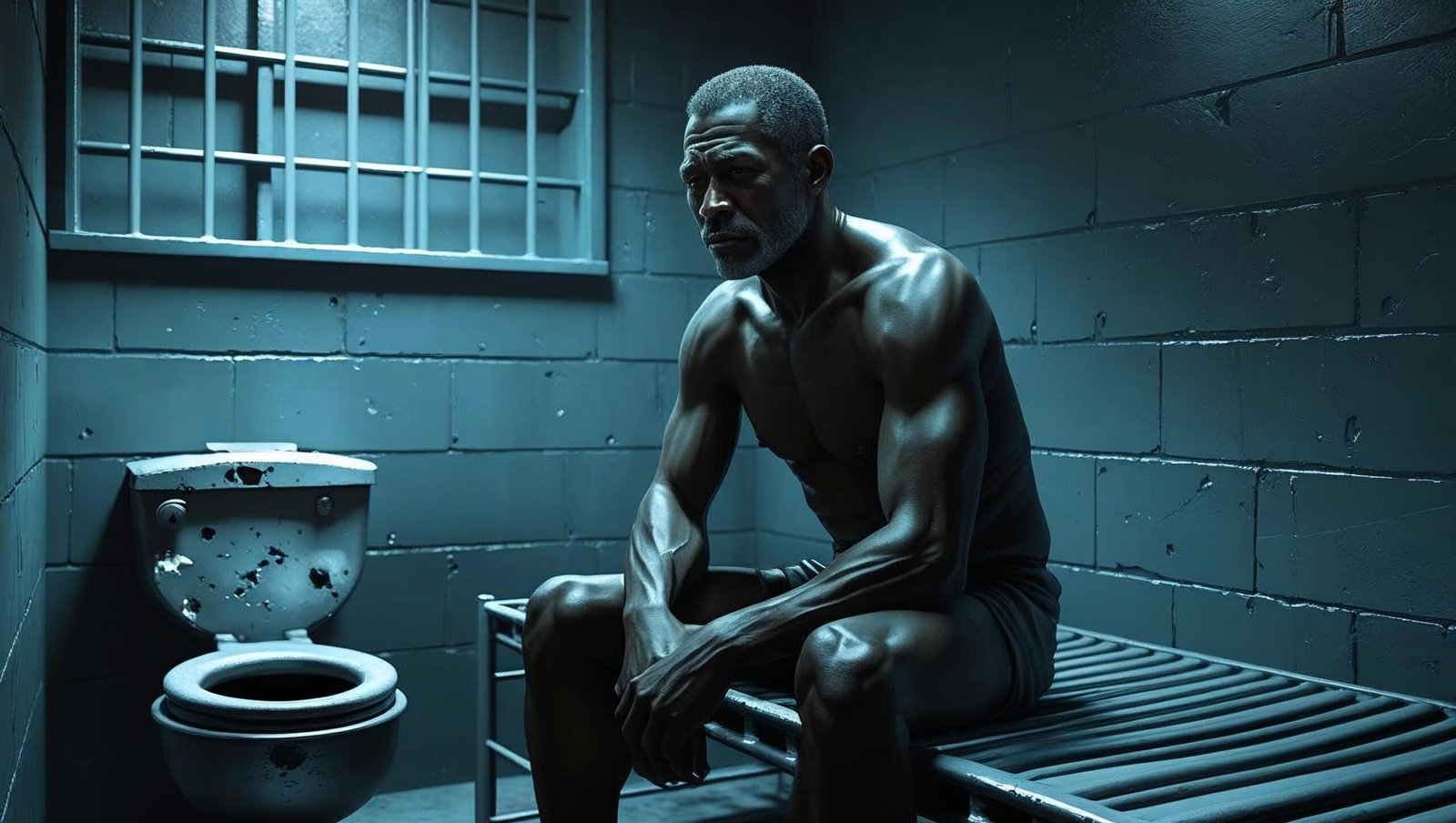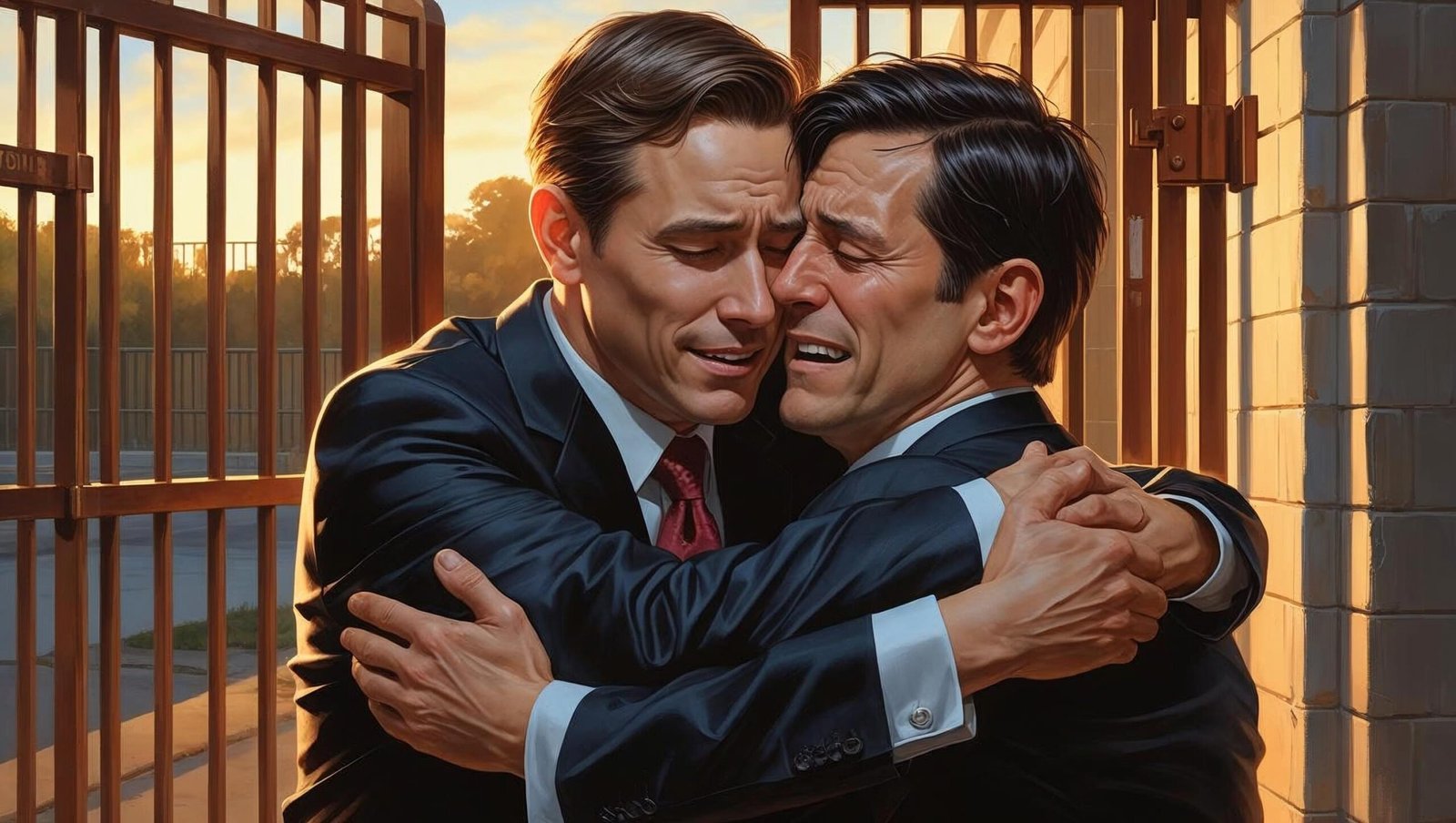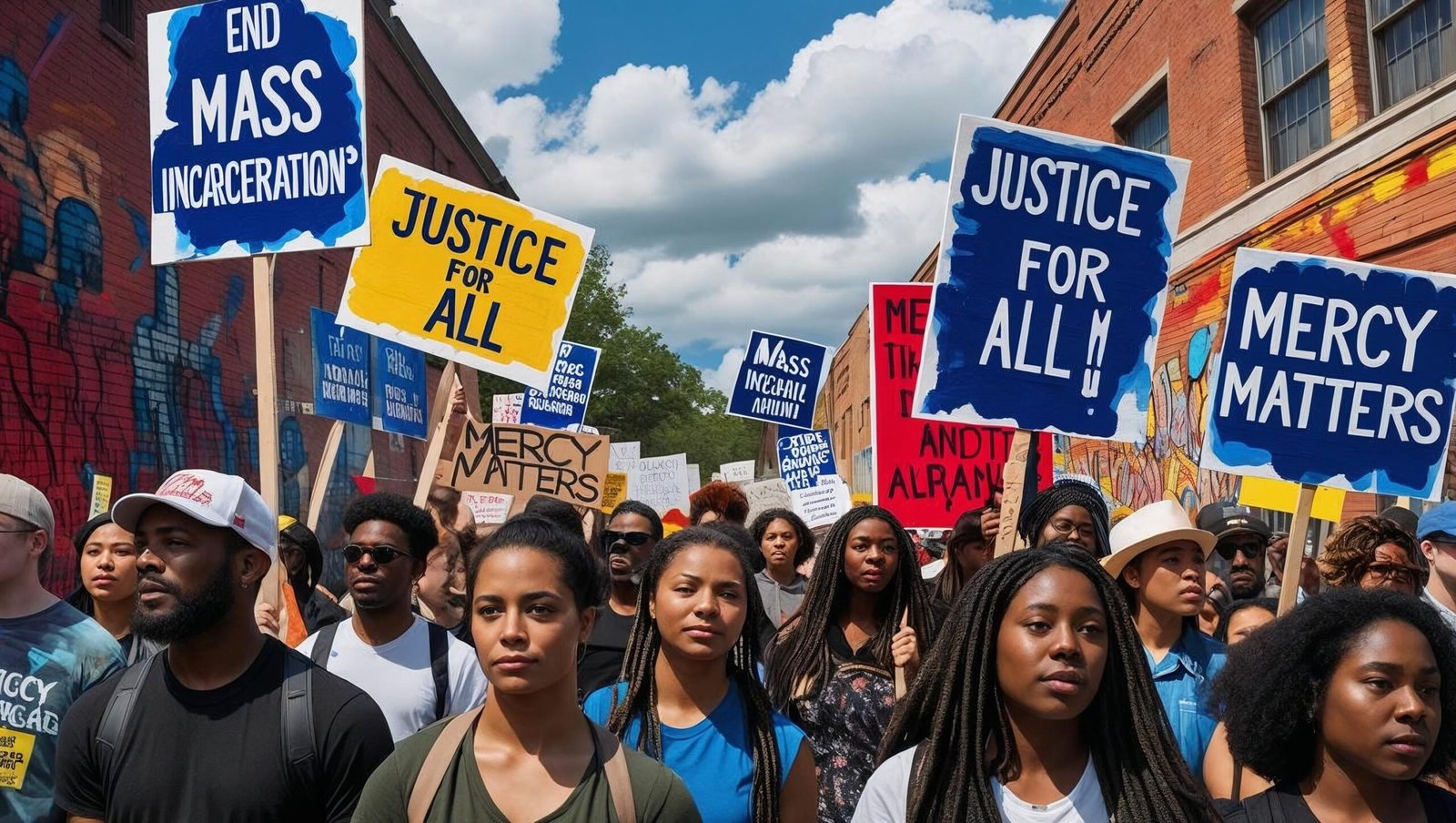Just Mercy by Bryan Stevenson: 7 Shocking Truths That Will Shake Your Soul
In the grand narrative of American literature that intersects justice, inequality, and the human spirit, Just Mercy by Bryan Stevenson stands as a harrowing testimony of the country’s legal system. The book is not merely a memoir; it is a monumental account of how mercy and justice can coexist amidst overwhelming injustice.
In this blog post, we will critically analyze the themes, impact, and emotional depth of Just Mercy by Bryan Stevenson, revealing how it has become a seminal text in understanding systemic racism and the moral responsibilities of legal practitioners.
Let us embark on a deep dive into this masterpiece that transcends law and literature.

1. Introducing the Emotional Power of Just Mercy
Just Mercy by Bryan Stevenson is the life’s work of a man who has stood face to face with injustice, racial discrimination, and structural cruelty. It chronicles Stevenson’s journey as a young lawyer who founded the Equal Justice Initiative in Montgomery, Alabama, and his fight to defend those most desperate and voiceless in the American justice system.
The centerpiece of the book is the case of Walter McMillian, a Black man wrongly convicted and sentenced to death for the murder of a white woman. Stevenson’s legal struggle to prove McMillian’s innocence exposes the grotesque failures of the judicial system in America.
The focus of Just Mercy by Bryan Stevenson is not merely on one case. The book takes the reader through multiple stories — of juveniles tried as adults, of mentally ill individuals abandoned by the system, and of families shattered by the prison-industrial complex. Each page echoes a cry for justice wrapped in the cloak of compassion.
2. The Brutality of Injustice Unveiled
One of the most gut-wrenching aspects of Just Mercy by Bryan Stevenson is its unflinching portrayal of injustice. The American legal system, as depicted in the book, is not merely flawed but actively complicit in perpetuating inequality.
Walter McMillian’s wrongful conviction was not an accident. It was a carefully orchestrated act of racial prejudice, prosecutorial misconduct, and police corruption. Stevenson exposes how the color of one’s skin can determine the outcome of a trial, no matter the evidence.
In this regard, Just Mercy by Bryan Stevenson is a stinging indictment of a society that claims to uphold liberty and equality but, in reality, often denies both to the most vulnerable.
3. Hope Amidst Despair
Despite its devastating truths, Just Mercy by Bryan Stevenson is ultimately a story of hope. Stevenson doesn’t merely narrate tragic tales; he illuminates the resilience of the human spirit.
Through his meticulous advocacy, he has saved countless lives from the death penalty and has brought global attention to the plight of those wrongfully incarcerated. His unwavering belief in redemption reminds us that change is possible, even in the darkest corners of the justice system.
The book, while emotionally taxing, is also spiritually uplifting. Stevenson’s moral courage and humility make Just Mercy by Bryan Stevenson a beacon of inspiration for anyone who believes in the dignity of human life.
4. The Ethical Depth of Bryan Stevenson’s Vision
Bryan Stevenson’s philosophy is simple yet profound: “Each of us is more than the worst thing we’ve ever done.” This powerful line encapsulates the entire thesis of Just Mercy by Bryan Stevenson. It challenges the reader to reconsider punitive justice and to embrace a more humane, rehabilitative approach.
In an age where punishment often takes precedence over understanding, Stevenson’s plea for mercy is revolutionary. His legal victories are not just courtroom wins — they are moral triumphs. The book compels readers to reflect on their own biases and to cultivate empathy as a societal value.

5. Storytelling That Stirs the Soul
What makes Just Mercy by Bryan Stevenson truly unforgettable is its emotional storytelling. Stevenson’s writing is not embellished or overly academic. Instead, it is intimate, vulnerable, and deeply human.
His portrayal of clients like Herbert Richardson, a Vietnam veteran with PTSD facing execution, forces the reader to confront uncomfortable realities. These are not just legal cases — they are lives caught in a web of neglect and dehumanization.
With each story, Just Mercy by Bryan Stevenson demands that we not look away. It is literature that confronts, educates, and heals.
6. The Social and Political Relevance
The publication of Just Mercy by Bryan Stevenson could not be more timely. Amidst the Black Lives Matter movement and global protests against police brutality, this book offers not just context but a moral compass.
The injustices laid bare in the book are not relics of the past. They are the lived reality of millions in today’s America. Mass incarceration, death row inequalities, and the criminalization of poverty are issues that Just Mercy by Bryan Stevenson confronts head-on.
Its adaptation into a feature film only expanded its reach, but the book remains the unfiltered truth. A must-read for activists, students, and all global citizens seeking justice.
7. The Role of Education and Empathy
One of the most transformative aspects of Just Mercy by Bryan Stevenson is its ability to educate without preaching. Stevenson draws the reader into a world most are unaware of — where children as young as 13 are tried as adults and mentally disabled individuals are sentenced to death.
Through this, the book becomes a powerful educational tool. It has been incorporated into school and university syllabi, discussed in community groups, and used as a framework in legal reform dialogues.
Reading Just Mercy by Bryan Stevenson is an exercise in empathy. It bridges the gap between ignorance and awareness, between complacency and action.
8. The Legacy of Slavery and Segregation in the Justice System
To fully understand the world depicted in Just Mercy by Bryan Stevenson, one must confront the historical roots that have nourished such injustice. The book does not exist in a vacuum. It is a direct consequence of America’s deep-seated legacy of slavery, Jim Crow segregation, and the subsequent policies of mass incarceration that disproportionately affect African Americans.
In his narrative, Stevenson draws an invisible but unmistakable line from the plantation fields to the modern prison cell. The disproportionately high number of Black men on death row or serving life sentences for minor offenses cannot be dismissed as coincidence. It is systemic — and it is deliberate.
Through the lens of Just Mercy by Bryan Stevenson, one witnesses how entire communities have been disenfranchised not only economically but also socially and politically. The judicial system has become a weapon, not a shield, for these communities — one that perpetuates silence, fear, and the devaluation of Black lives.
This historical insight is not overtly polemical in tone. Stevenson does not scream. Instead, he quietly and effectively paints the portrait of a justice system built on the scaffoldings of inequality, preserved across generations, masked by legal jargon and bureaucratic process.

9. Women and the Forgotten Victims of the System
While the book mainly highlights the plight of men within the carceral system, Just Mercy by Bryan Stevenson also touches upon the often-overlooked narrative of incarcerated women. He points to the case of Marsha Colbey, a woman wrongfully imprisoned after the death of her stillborn child — a victim not only of medical ignorance but also of economic despair.
Women, particularly poor women and women of color, face a distinct form of institutional violence. The system judges them not only as alleged criminals but also as failed mothers, wives, or daughters. Their reproductive choices, mental health, and personal histories are weaponized in courtrooms and used against them.
This dimension of the book expands its reach, demonstrating that injustice wears many faces and targets multiple vulnerable demographics. It reminds the reader that Just Mercy by Bryan Stevenson is not only about race or crime — it is about the very humanity of those we cast aside.
10. Psychological Toll on Legal Advocates
Rarely do readers consider the emotional and psychological toll experienced by those who advocate for justice. Just Mercy by Bryan Stevenson invites the audience into the inner world of a man constantly grappling with grief, failure, and the weight of moral obligation.
Stevenson recounts sleepless nights, his trembling hands during his first death row visit, and his moments of profound doubt. These are not signs of weakness but of profound empathy — qualities that make him an extraordinary advocate and a compelling narrator.
Moreover, the book serves as a manual for aspiring lawyers and human rights defenders. It does not romanticize legal work. Instead, it emphasizes the grit, sacrifice, and inner resilience required to stand against systemic cruelty. Stevenson’s vulnerability becomes a virtue — a mirror in which readers see their own capacity for courage.
11. The Failings of Capital Punishment
No review of Just Mercy by Bryan Stevenson would be complete without a critical examination of its stance on capital punishment. The book is unequivocal in its opposition to the death penalty. Not merely on moral grounds, but also on the basis of its proven failure to deter crime, its disproportionate application on racial minorities, and its shocking rate of wrongful convictions.
Walter McMillian’s case is emblematic of everything wrong with capital punishment. Despite overwhelming evidence of innocence, he remained on death row for six years. The judicial machinery — slow, indifferent, and corrupted by racial bias — failed him repeatedly.
Beyond McMillian, Stevenson presents a gallery of cases where the condemned were victims of incompetent defense, prosecutorial misconduct, or systemic neglect. Each story is a verdict not just on the individual case but on the entire premise of state-sanctioned execution.
The question arises: How many innocent people must die before society abandons this irreversible form of punishment?
12. Intersectionality: Poverty, Race, and Mental Health
The book brings to light the devastating intersection of poverty, race, and mental illness. It is not only the Black and brown who suffer disproportionately — it is the poor, the mentally ill, and the intellectually disabled who bear the heaviest burdens of America’s punitive justice.
One of the most compelling narratives in Just Mercy by Bryan Stevenson is that of George Daniel, a man suffering from schizophrenia who was sentenced to death after his mental illness was willfully ignored during trial. Another, Jimmy Dill, had severe intellectual disabilities and was executed after a broken legal system failed to review his case with compassion.
These stories illustrate that the criminal justice system is not equipped to address mental health or poverty. It is a blunt instrument, not a healing one. Rather than addressing root causes, it punishes symptoms — often with finality.

13. From Book to Movement: Public Response and Cultural Impact
Since its publication, Just Mercy by Bryan Stevenson has grown beyond the boundaries of a book. It has become a cultural and political phenomenon. The public response — from grassroots organizers to presidential candidates — has underscored the urgency of the issues Stevenson raises.
Its adaptation into a critically acclaimed film starring Michael B. Jordan and Jamie Foxx further propelled the story into mainstream consciousness. But what remains most powerful is the book’s continued relevance. It is cited in courtrooms, classrooms, and community centers. It has inspired donations to legal aid funds, protests against wrongful incarceration, and reforms in sentencing laws.
The focus keyword — Just Mercy by Bryan Stevenson — has become synonymous not just with a title, but with a movement. A movement for dignity, for reform, and most importantly, for mercy.
14. Educational Applications and Policy Influence
The book is not confined to personal bookshelves. It has found a home in curricula across universities, law schools, and high schools. Professors use it to teach not only criminal law but ethics, civil rights, and social justice. Its vivid narratives offer real-world applications for complex theories and provoke critical thinking among students.
Policy makers, too, have been moved. Reforms in juvenile sentencing, mental health justice, and death penalty reviews have referenced data and anecdotes from Stevenson’s work. The Equal Justice Initiative has gone on to establish The Legacy Museum and The National Memorial for Peace and Justice — both direct descendants of the ideas enshrined in the book.
This demonstrates that literature, when wielded truthfully, can shape laws, shift hearts, and mobilize nations.
15. Final Reflections: What Readers Take Away
When the final page is turned, the reader is left with more than just information — they are left with a moral dilemma. What kind of society do we want to live in? One that punishes indiscriminately, or one that redeems patiently?
Just Mercy by Bryan Stevenson doesn’t dictate answers. It instead instills a discomfort — the type that spurs introspection and, eventually, action. Readers find themselves asking not “what happened to them?” but “what can I do?”
Whether one becomes a lawyer, an activist, or simply more compassionate in their personal lives, the impact of this book is unmistakable. It changes how you think about crime, punishment, fairness, and above all — humanity.
Conclusion: A Book That Demands Action
Just Mercy by Bryan Stevenson is not just a book — it is a call to action. It urges us to dismantle systems of oppression and to rebuild our institutions with compassion at their core.
In a world often numb to suffering, Stevenson brings back the human face to justice. His stories linger long after the final page, urging readers to fight for a better world. Whether you are a lawyer, student, educator, or simply a human being, this book will shake your conscience.
To read Just Mercy by Bryan Stevenson is to be transformed. It is a spiritual, intellectual, and emotional journey into the heart of justice — and into the soul of humanity.

Frequently Asked Questions (FAQs)
Q1. Is Just Mercy by Bryan Stevenson based on a true story?
Yes, the book is a memoir that recounts true legal cases Bryan Stevenson has worked on, primarily the case of Walter McMillian.
Q2. Why is Just Mercy by Bryan Stevenson so impactful?
The book’s emotional storytelling, coupled with real-life legal battles against injustice, makes it a deeply transformative reading experience.
Q3. Who should read Just Mercy by Bryan Stevenson?
Everyone — but especially students, legal professionals, policymakers, and anyone interested in civil rights and justice reform.
Q4. How does the book contribute to social justice?
By exposing systemic racism and advocating for prison reform, the book has catalyzed public discourse and inspired policy changes.
Q5. What is the main message of Just Mercy by Bryan Stevenson?
That justice and mercy must go hand-in-hand, and every individual deserves dignity, fairness, and the opportunity for redemption.
Powerful Comments Section
“Few books have ever moved me like Just Mercy by Bryan Stevenson. This is not just literature — it’s a movement.” — Amit Verma
“After reading this review, I immediately picked up the book. Thank you for this detailed, powerful breakdown!” — Nandita Rao
“Just Mercy by Bryan Stevenson deserves a place on every bookshelf — and this review captures its essence beautifully.” — Dr. Priya Menon
For more such thoughtful reviews, visit: shubhanshuinsights.com
It serves as a testament to the enduring struggle for civil liberties, a reminder that silence in the face of injustice is complicity, and a plea to awaken our collective conscience before it’s too late.